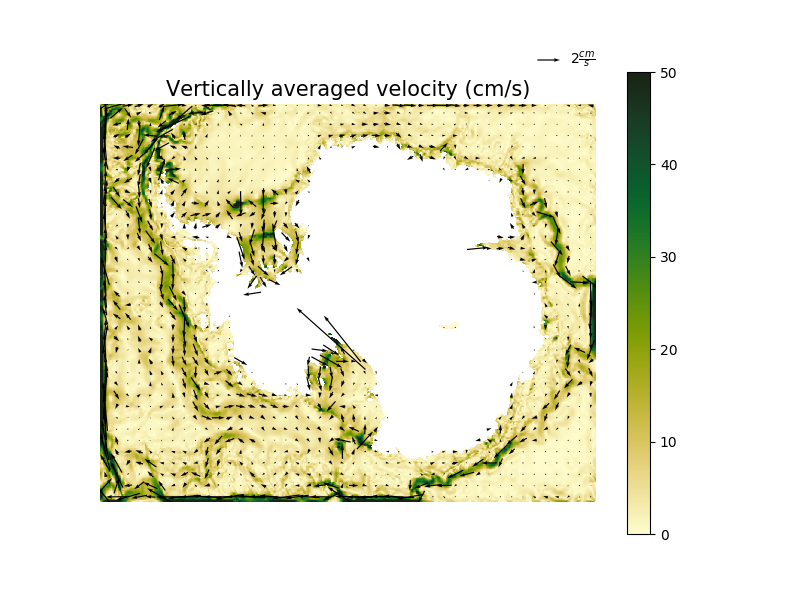Antarctic tidal melting ... first results
Question:
- Tides modulate ice shelf basal melting
- hence potentially impact Antarctic basal mass balance
- HOWEVER, total contribution to mass loss unknown
Approach:
- Circum-Antarctic ocean-ice shelf model
- that reproduces observed tides and basal melting
- Experiment tides on/off
Model Evaluation: Tides



- sigma_comb = measure for model bias in tidal energy
- sigma_comb of other models: 7 - 23 cm
Complex RMSD to ATG:
Sigma_comb = 15 cm
M2: 12 cm
N2: 3 cm
K1: 7 cm
O1: 5 cm

Model Evaluation: Tides
- good overall accuracy
- biggest differences at grounding zone of large ice shelves
- possibly due to tidal flexure and unknown bathymetry

Our total basal mass loss: 1248 Gt/a
1735 ± 164 Gt/a
Rignot et al. 2013

Evaluation: basal melting
- total mass loss agrees well with observations
- circum-Antarctic pattern ok
- regional patter: little refreezing and strong melting at ice front
Satellite based studies:
1090 - 1600 Gt/a
Results: tidal melting

- tidal melting contributes
140 Gt/yr (14%) of total basal mass loss - change in regional melting/refreezing up to more than 100%
- cold water ice shelves more impacted than warm ones
Summary
- tides contribute 140Gt/yr (14%) to Antarctic basal mass loss
- tides modulate local melt rates of cold ice shelves by up to 100%
- highlights the need to account for tides when modeling Antarctic basal mass balance
Thanks !
Results: nodal tidal melting

- integrated effect small
- local impact maybe relevant around important grounding zones
- Tidal amplitudes are modulated in 18.6 year cycle
- Antarctic tides:
- weakest in 2015
- strongest in 2024
- Experiment: 2015 tides vs. 2024 tides

Upcoming: in-band variance and mean melting
Upcoming: 1 km resolution

St-Laurent, P., J. M. Klinck, and M. S. Dinniman (2015), Impact of local winter cooling on the melt of Pine Island Glacier, Antarctica, J. Geophys. Res. Oceans, 120
- to resolve eddies and internal tides

Models: 1571-1899
1600
642, 739
762 Gt/a
Evaluation: basal melting


Basal mass balance:
1325 ± 235 Gt/a
using Satellite data
1325 ± 235 Gt/a
1735 ± 164 Gt/a
Rignot et al. 2013
Schodlok et al. 2016



Evaluation: basal melting
using ocean Models


1600 Gt/a
MetROMS: 642 Gt/a
FESOM: 739 Gt/a.
Evaluation: basal melting
using ocean Models


1516 ± 106 Gt/y
1,454 ± 174 Gt/y
Evaluation: basal melting
using Satellite data
What are the mechanisms involved in ice sheet retreat?
tides?
Tidal ice shelf flexure
Far field sea level rise!
Atmosphere and
ocean warming!
Tide sea ice interaction
Tidal melting
... ?
Bugs: embrace failure!

Results: nodal tidal melting

Results: tidal melting




Makinson et al. (2011)
Results: tidal melting at PD




Results: tidal melting

Mueller et al. (2012)



tidal melting
By konsole
tidal melting
- 80



